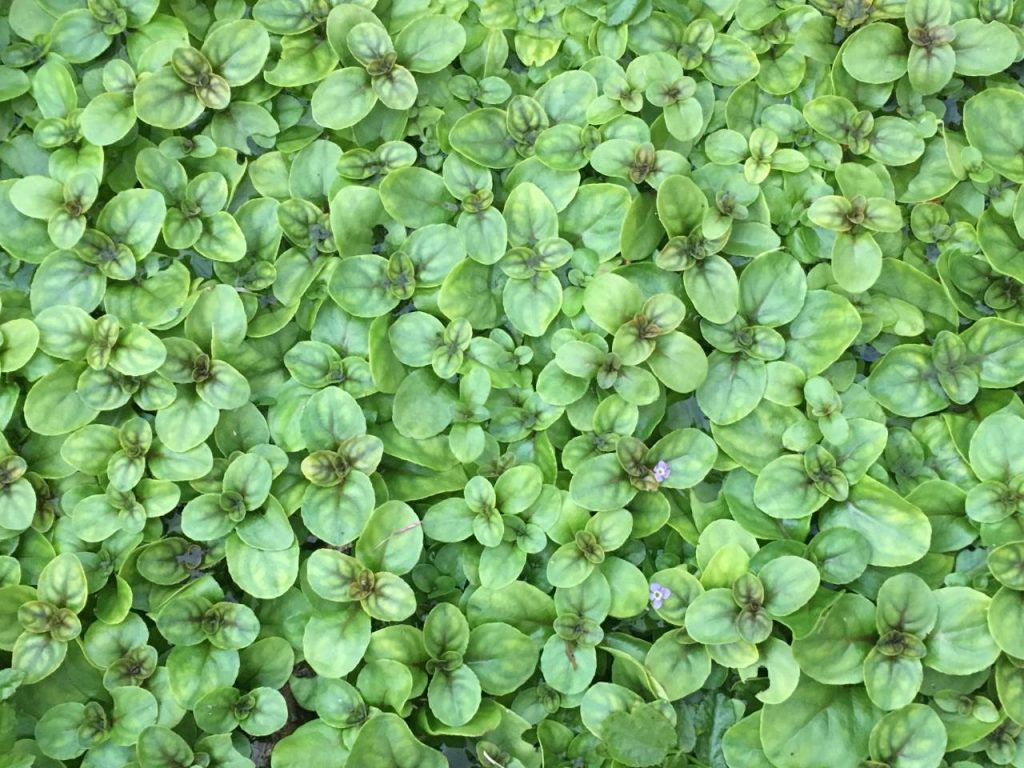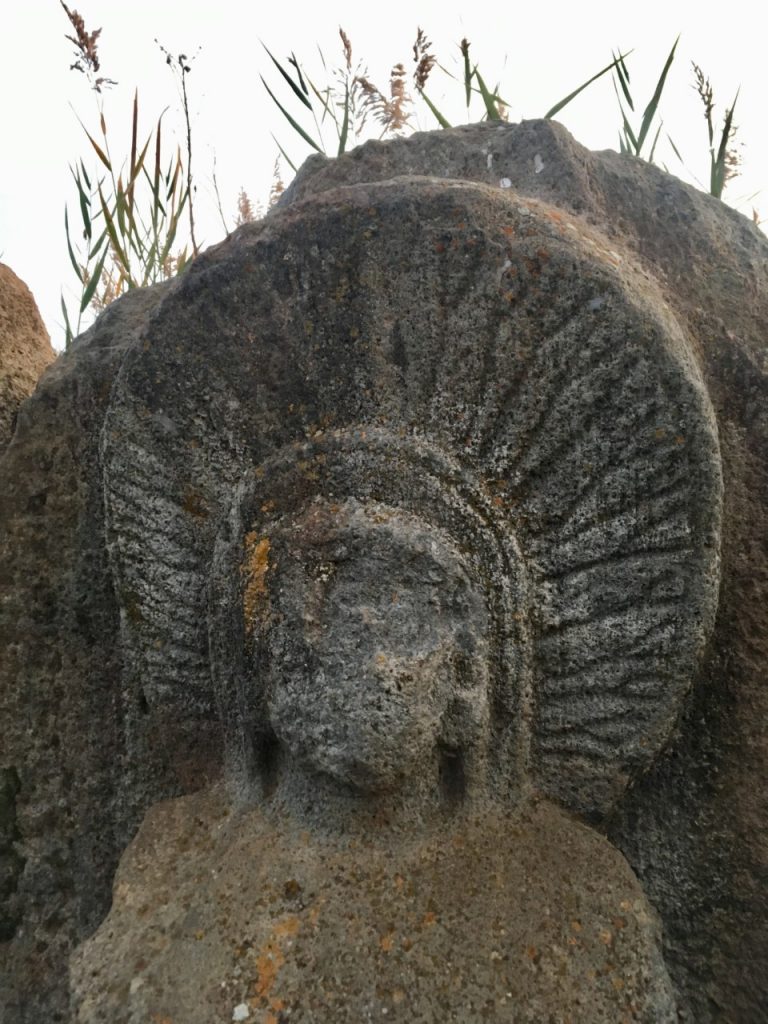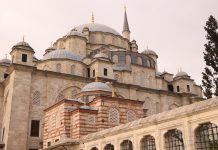We raced against the sun to reach the spring before all light had gone, Seçkin at the wheel and me biting my nails with anticipation. We arrived just before the sun slipped away. I bolted from the car and ran towards the ancient water structure known as Eflatun Pınar (violet spring or lilac-colored spring). There it stood in all its glory, a majestic, powerful presence amongst the silence. It felt even more dramatic with the setting sun as soft hues of orange and purple began to appear. Today, the spring is surrounded by agricultural fields and nearby Lake Beyşehir. This area is considered part of the Beyşehir district and this ancient site is located just west of present-day Konya. It was early Autumn when we came here, but it felt like Spring since the entire area was overflowing with lush, green plant life and colorful wildflowers.

Eflatun Pınar is an ancient Hittite spring sanctuary. This divine monument was built during the late Hittite Empire and has stood for over some 3,200 years. The Hittites believed water was life and therefore built many of their temples near water sources. The structure is made of rectangular, volcanic stone blocks with carved reliefs of mountain and water deities and mythological creatures that are part human, part animal who preside (and protect) over a pool of fresh, clear spring water that constantly runs from a nearby source. At the center of the monument are carved reliefs of what is believed to be the Sun Goddess and Storm God with winged symbols rising above them. In ancient times, this site was considered sacred by the Hittites, they believed the water to have healing powers as it was protected by the god and goddess deities that guarded it. Even today, it is still believed by many that the water has healing properties and people continue to drink directly from the flowing waters. I wondered, was this location just as quiet and isolated then as it is today? I noticed a few houses nearby and what appeared to be a tiny neighborhood. A few local women were sitting near the road, next to the site and tried to sell us their handmade wares. I had a feeling that they came here daily to try and earn a few liras. We were the only visitors at this moment. I felt lucky about this and a little sad. I wondered how often people ventured out here to visit this lonesome site.

Since I had dashed directly towards the sacred structure and passed by everything else, I now backtracked to see what else there was to see around the site. I was hypnotized by the rich, vivid greens of the low brush jungle abundant with healthy, wild plants that flourished all over the place. I crouched down to take a closer look and discovered a whole other world at my fingertips. I could feel an intense life energy pulsing beneath my feet and I even felt a little stronger, more alive, because of it. I felt compelled to wade through the shallow waters of the nearby stream, but shook myself out of that daydream since we didn’t have much time before it was dark. Instead, I walked swiftly around the pool vicinity taking a few moments to stop and touch the rocks to try to tap into their ancient energy that had been stored away for many years. A menagerie of greens erupted from within the pool; it was a living, jigsaw canopy of vegetation. The depth of the pool appeared to be quite deep and I wondered what treasures might lay below. Taking a step back, I realized that the entire pool seemed to resemble a giant mirror reflecting the sky. Perhaps this was another way for the people of the ancient world to communicate with the deities, through a sky mirror, a window to another world…

Back towards the entrance, I saw a life size, triple bull statue that appeared to be on guard watching over the sanctuary. Bulls were considered powerful and symbolic animals during the time of the Hittites. I later learned that this was not the original location of the statue and wondered who moved it and why did they choose to put it here? The statue feels somewhat out of place at this spot like its on the outskirts of town. I took another lap around the outside of the pool and noticed two weathered, totemic relief statues, possibly deities, that appeared to rise out of the water, located directly across from the main structure. Their faces were indistinct or maybe they were never there to begin with, but the disc shaped halos or crowns that framed their heads still clearly showed carved lines that could represent branches or veins. With native grasses waving behind them in the soft breeze, I thought that maybe they were deities of the harvest? Their position was difficult to reach, but I managed to carefully climb over some rocks and get close enough to touch one of these statues. Perhaps that was the purpose, to position them in a way that they cannot be touched; for what mortal is allowed to touch a God or Goddess?

Most of the rock surfaces were covered with electric orange bursts of lichens or moss adding a vibrant layer of skin to cover those old bones. I drank from the flowing water of the spring and thought how lucky I was at that moment to have access to a place like this and drink pure, clean, fresh water straight from the source. Unfortunately, springs are becoming less available to us or disappearing altogether with the privatization of water and the disappearance of agricultural lands all around the world. I imagined there was a time, maybe even not so long ago, when all of Turkey was abundant with magnificent springs where people came to pay respect to nature and to drink of Earth’s bounty for free. Nature is truly a blessing. It’s places like Eflatun Pınar that serve as important reminders of just how valuable natural water sources are. Water truly is Life.
Images courtesy of author.









